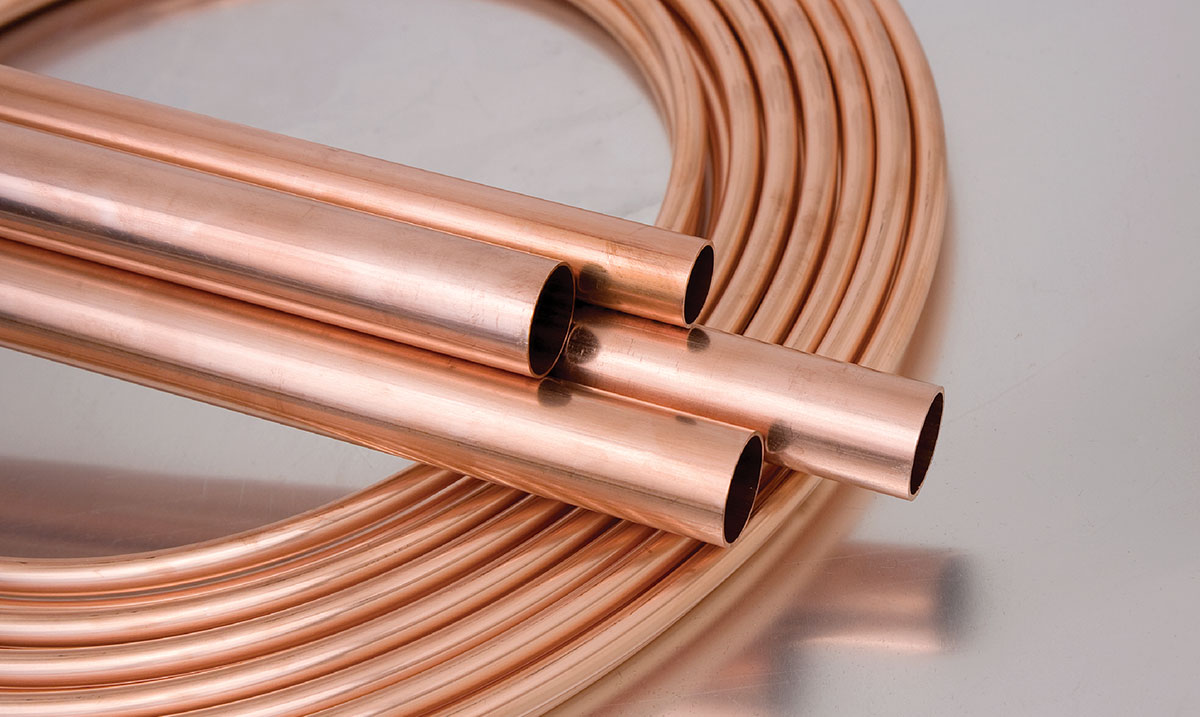Top Trends in Home Design Featuring Trendy and Practical Copper Products
Top Trends in Home Design Featuring Trendy and Practical Copper Products
Blog Article
How Copper Products Add To Sustainable Practices in Various Sectors
Copper items are progressively acknowledged for their significant payments to sustainable techniques across several fields, driven by their integral residential properties such as toughness, efficiency, and recyclability. In sustainable power systems, for example, copper improves the capability of solar and wind modern technologies, while its application in construction lessens waste through longevity. The material's antimicrobial qualities supply encouraging advantages in health care settings. As markets look for to take on even more sustainable techniques, the duty of copper might confirm pivotal in attaining ecological objectives. What ramifications might this have for future advancements in sustainability?
Copper in Renewable Power
Copper plays a vital duty in the innovation of renewable resource technologies, acting as an essential conductor in different applications. Its phenomenal electric conductivity and resistance to rust make it an excellent product for electrical wiring, which is important in solar panels, wind turbines, and energy storage systems. In solar photovoltaic or pv systems, copper is used in the interconnections and wiring, enabling reliable power conversion from sunlight to electrical power.
In wind energy, copper is important to the generators and transformers that transform kinetic energy right into electrical energy, making certain optimum performance and integrity. The demand for electric automobiles (EVs) is increasing, with copper being a vital component in batteries, electric motors, and charging facilities. The shift to EVs dramatically enhances the need for copper, as these vehicles generally use 4 times more copper than conventional interior burning engine automobiles.
As the world seeks to reduce climate modification and shift to lasting power sources, copper's function comes to be significantly crucial. The material not only improves the efficiency and toughness of renewable resource systems yet also sustains the wider objective of lowering greenhouse gas exhausts and promoting a sustainable future.
Eco-Friendly Construction Materials
In recent years, there has been a notable change in the direction of the fostering of environmentally friendly building products in feedback to growing environmental concerns. This adjustment is encouraged by the requirement for lasting choices that decrease eco-friendly impacts while preserving structural integrity and aesthetic appeal.
Copper, understood for its resilience and recyclability, has actually arised as a key player in this market. It can be made use of in roof, pipes, and electrical systems, contributing to energy efficiency and reducing waste. Copper's durability implies fewer substitutes gradually, additional improving its sustainability profile.
In addition, materials such as bamboo, redeemed timber, and recycled steel are getting popularity. These alternatives not just use decreased ecological effect yet also advertise resource preservation. As constructing codes progressively stress sustainability, designers and contractors are incorporating these products right into their tasks, promoting technology in style.
The enhancing fostering of environment-friendly building materials mirrors a more comprehensive dedication to sustainability in the built setting. By prioritizing these materials, the building industry can considerably decrease its carbon footprint, line up with regulative standards, and sustain a much healthier ecosystem for future generations. This pattern notes a pivotal step in the direction of a much more lasting future in construction.
Copper's Function in Health care
Current research studies have actually highlighted the significant duty of copper in healthcare settings, especially because of its antimicrobial residential properties. Copper surface areas have been revealed to minimize the visibility of pathogens, consisting of microorganisms and infections, by as much as 99.9% within a brief duration. This remarkable efficiency makes copper an important product for high-touch surface areas in medical facilities, such as doorknobs, bed rails, and IV poles, thereby adding to boosted infection control measures.
In enhancement to its direct antimicrobial effects, copper also contributes in the more comprehensive context of health center sustainability (Copper Products). By including copper into clinical devices and furnishings, health care facilities can minimize the occurrence of healthcare-associated infections (HAIs), which not just boosts patient end results but additionally reduces the costs linked with extended medical facility remains and extra treatments
In addition, copper's longevity and recyclability align with sustainable practices, enabling accountable resource administration. As health care systems increasingly focus on both individual security and environmental stewardship, the combination navigate to this website of copper products is ending up being more widespread. This twin benefit highlights copper's vital payment to a much healthier, more secure, and more sustainable health care environment.
Sustainability in Transport

Additionally, copper's sturdiness and deterioration resistance add to the longevity of transport facilities anchor (Copper Products). In rail systems, for example, copper parts improve the reliability and efficiency of signaling and power systems, crucial for lowering hold-ups and power consumption. In addition, copper's role in renewable resource systems, such as solar and wind, sustains sustainable transport options by giving clean power for electric transit choices
Investments in copper innovation not just foster sustainability yet additionally promote economic development and task development in eco-friendly fields. As sectors aim to fulfill stringent ecological laws, the application of copper products in transport emerges as a crucial method in accomplishing sustainability objectives and promoting a cleaner, much more effective future.
Copper and Round Economic Situation
As the world increasingly embraces sustainability, the role of copper in the circular economic situation ends up being ever a lot more significant. Copper's innate residential properties-- such as its conductivity, longevity, and recyclability-- placement it as a crucial material in a resource-efficient economic climate. The round economic climate intends to decrease waste and optimize resource usage via recycling and reusing materials, and copper excels in this respect.
The steel can be recycled forever without loss of high quality, making it an ideal candidate for sustainable practices throughout different fields, consisting of building and construction, electronics, and renewable resource. By recovering and recycling copper from end-of-life products, markets can considerably reduce the requirement for virgin products, consequently reducing environmental influences related to mining and handling.
Furthermore, the combination of copper right into circular economy frameworks not just saves resources however additionally promotes advancement. Organizations that focus on copper reusing add to a much more lasting supply chain, boosting their competition while aligning with governing demands and consumer preferences for eco responsible items.
Final Thought
Finally, copper items substantially add to sustainable methods throughout several fields. Their necessary duty in enhancing eco-friendly power technologies, advertising environment-friendly building and construction products, supporting infection control in health care, helping with sustainable transportation, and personifying the concepts of a circular economic situation highlights the convenience and significance of copper. By integrating copper right into different applications, markets can accomplish higher efficiency, reduce ecological influence, and line up with global sustainability goals, ultimately promoting a much more sustainable future.

Copper's outstanding conductivity makes it a preferred product in electric automobile (EV) systems, enhancing energy effectiveness and performance. Furthermore, copper's role in renewable power systems, such as solar and wind, supports lasting transportation remedies by giving clean energy for electric transit alternatives.
Their essential role in improving sustainable power technologies, promoting green building materials, supporting infection control in medical care, promoting sustainable transportation, and symbolizing the concepts of a circular economic climate emphasizes the convenience and importance of copper.
Report this page